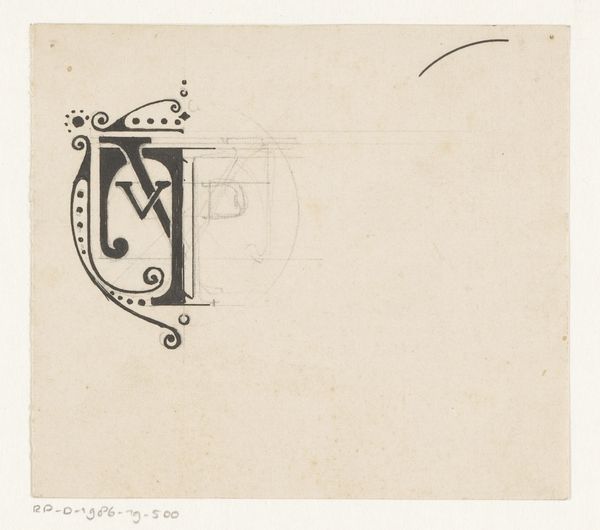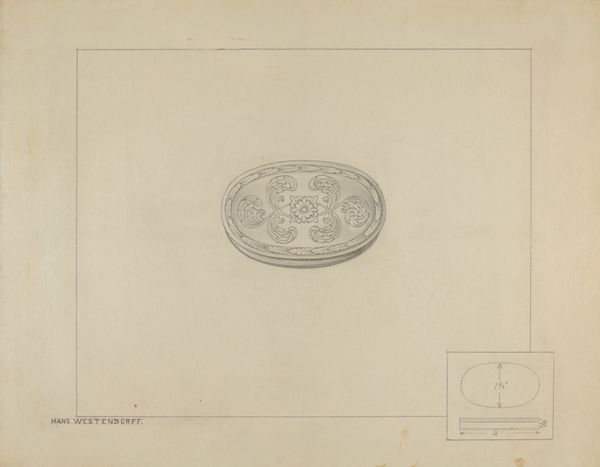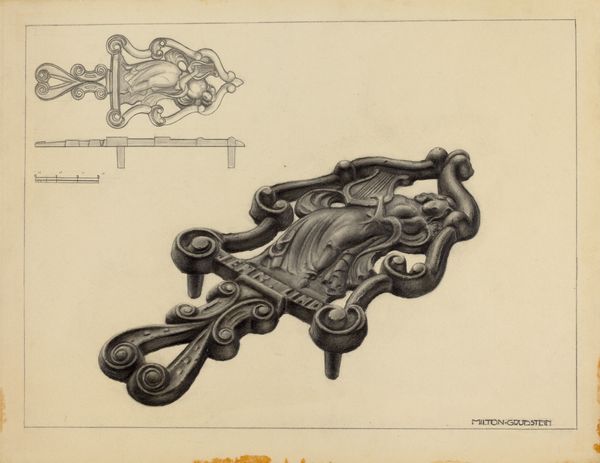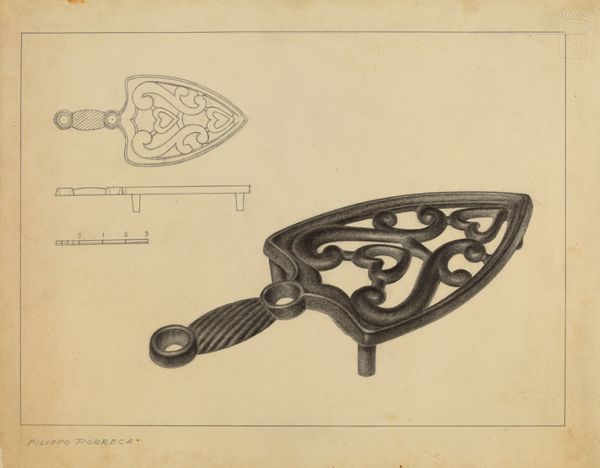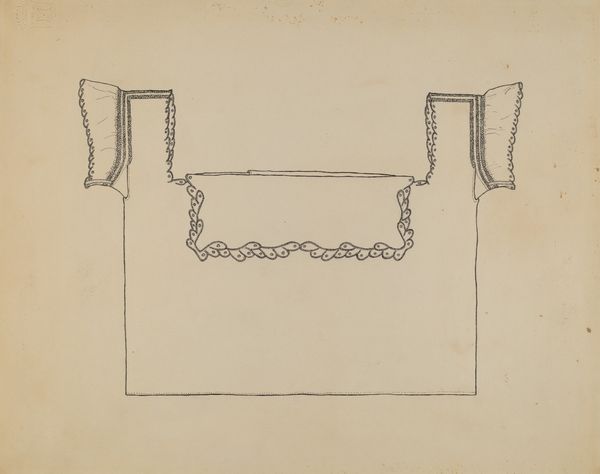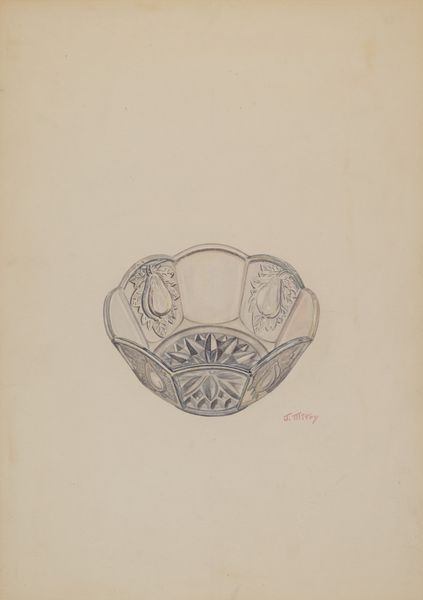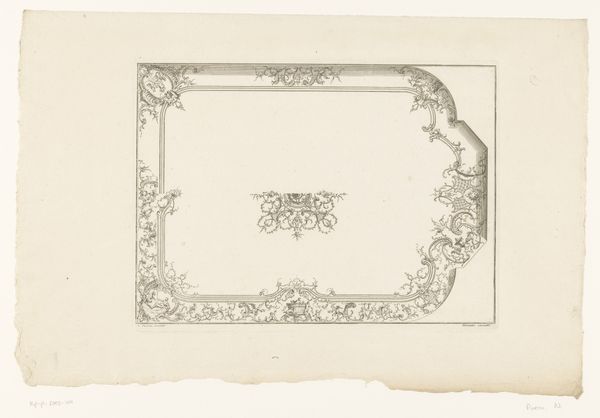
drawing
#
art-deco
#
drawing
#
geometric
Dimensions: overall: 22.8 x 30.2 cm (9 x 11 7/8 in.)
Copyright: National Gallery of Art: CC0 1.0
Editor: This is "Knee Buckles," a drawing by James M. Lawson from around 1937. It has such clean lines; I find the Art Deco style very calming. What catches your eye in this piece? Curator: Well, I think it is a fascinating intersection of form and function when seen in its historical context. We need to consider how design—even something as seemingly mundane as a knee buckle—reflects the socio-economic values of the time. Given that this is from the late 1930s, what was the state of design then? Editor: I think I see where you're going with this, since I know the Art Deco style emerged after World War I in the context of the "Roaring Twenties" until the Great Depression took hold of society during the 1930s, and these buckles reflect the rise and fall of prosperity through streamlined geometric styles as consumer goods began being manufactured in mass production. Curator: Precisely. We have to look at these objects as a record of industry and societal aspirations, and in turn the distribution of such artifacts to consumers, or certain niche classes in particular. Also, I’m intrigued by how Lawson has elevated the buckles into an object worthy of artistic representation and observation, right? Editor: You are right, and I did not consider it that way! These aren't just utilitarian objects; their style speaks volumes about who would use them, and who valued beauty even in practical things, regardless of whether society as a whole could embrace it or not. Curator: Exactly! It forces us to reconsider what we deem 'art' and whose stories are told in museum spaces. Editor: This really shifts my perspective on how design informs and is informed by cultural moments. Thanks for illuminating that!
Comments
No comments
Be the first to comment and join the conversation on the ultimate creative platform.
